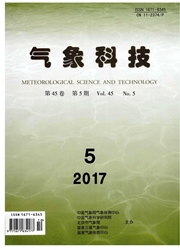

 中文摘要:
中文摘要:
基于上海地区11个气象站1960—2009年的日照时数、云量、水汽压、降水资料,采用线性趋势分析、Mann-Kendall检验等气候统计诊断方法,分析了上海地区日照时数年际、季节的变化特征以及空间分布特征,并对影响日照时数的气候因子进行了分析。结果表明,1960—2009年期间,上海地区日照时数呈显著减少的趋势,其中夏季、秋季和冬季的日照时数显著减少,春季日照时数变化不显著。1980年是上海日照时数减少突变的时间点,是日照时数由正距平占优势转为负距平占优势的转折点。空间上,整个上海日照时数在过去50年均呈减少趋势,并且由北向南减少趋势逐渐减弱。上海年日照时数与降水量和降水日数呈显著负相关,年日照时数的减少与年降水量的增加有关。上海各季日照时数与云量、水汽压和降水基本都呈显著的负相关,夏季日照时数减少主要是由降水量的增加造成的,冬季日照时数的减少与水汽压和降水量的增加有关。
 英文摘要:
英文摘要:
Based on the data of sunshine duration,cloud amount,surface vapor pressure,and precipitation of 11 meteorological stations in Shanghai,the temporal and spatial variation characteristics of sunshine duration and the influencing factors from 1960 to 2009 are analyzed using the linear trend,Mann-Kendall test and other methods.The results indicate that annual sunshine duration in Shanghai reduced significantly in recent 50 years.In summer,autumn and winter,sunshine duration reduced significantly,but in spring,it changed insignificantly.The sunshine duration had an abrupt change in 1980.From 1983,the sunshine duration reduced significantly in Shanghai.Spatially,the sunshine duration reduced in the whole area in recent 50 years,more obvious in the northern parts than in the southern parts of Shanghai.There was significant negative correlation between annual sunshine duration and annual precipitation as well as annual precipitation days,so the increase of annual precipitation amount might contribute to the reduction of annual sunshine duration.There was basically significant negative correlation between seasonal sunshine duration and seasonal cloud amount,surface vapor pressure,and precipitation in four seasons.The increase of summer precipitation amount might contribute to the reduction of summer sunshine duration,and the increase of winter precipitation amount and surface vapor pressure might contribute to the reduction of winter sunshine duration.
 同期刊论文项目
同期刊论文项目
 同项目期刊论文
同项目期刊论文
 期刊信息
期刊信息
